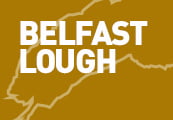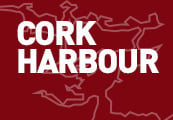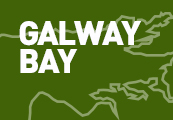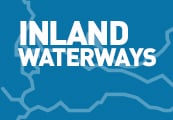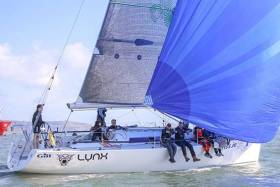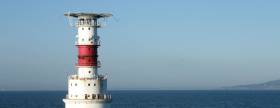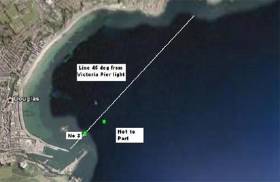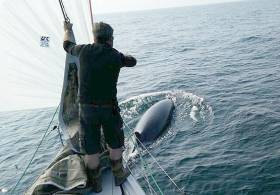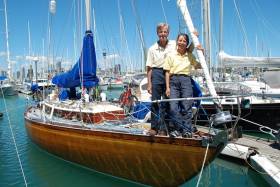Displaying items by tag: ISORA
Saturday's 42–mile ISORA offshore race from Dun Laoghaire features Dublin lighthouses Rockabill and Kish and a finish back at Dun Laoghaire in time to join the apres–sail at Saturday's Royal St George Yacht Club Regatta. Download the race details below.
Irish Sea Offshore Racers (ISORA) boats represent 25% of today's record Round Ireland fleet of 64–boat writes Peter Ryan. ISORA will be presenting a trophy to the winner of these boats and in view of the number of ISORA boats taking part, ISORA will also present class prizes based on the ISORA class split to Class 1, 2, Silver and Two-Handed.
The ISORA boats taking part today are:
Mojito - Peter Dunlop & Vicky Cox
Bam - Conor Fogerty
Lynx - Kenneth Rumball
Aurelia - Chris Power Smith
Polished Manx 2 - Kuba Szymanski
Maybird - Darryl Hughes
Wakey Wakey - Roger Smith
Euro Carparks - Dave Cullen
Lule Belle - Liam Coyne & Brian Flahive
Desert Star - Ronan O'Siochru
Albeiro - David Simpson
Pipe Dreamer - Paul Sutton
Big Deal - Derek & Conor Dillon
Adelie - Peter Hall
Applegreen for Kids - Stephen Mullaney
Tanit - Robert Float
Innovation by necessity in windless conditions led ISORA to start Friday's race from Dublin to the Isle of Man by Virtual Race Management (VRM). The ground breaking move that brought about a silent start and finish could revolutionise race management, writes Peter Ryan.
At the start of the week when long range weather forecasts start approaching reality, the weather forecast for the race from Dun Laoghaire to IOM was indicating NE winds 20-25knots – a big bad long beat!!! Well after the tame weather conditions earlier in the season for the ISORA races, a good blast could not be unexpected. See results below.
As the week progressed, the forecast indicated that the winds were decreasing. That was good. Then decreasing again, that was OK. Then decreasing again to nothing – that was a problem!!! By Friday morning of the race the forecasts were indicating no wind in much of the Irish Sea. Added to this woe was the fact that the tides on the day were strong springs. These are not good conditions for setting a long offshore course.
The usual start was to be provided by Commodores Larry Power and Barry MacNeaney at Pier mark. However the Committee thought that the start there would result in the fleet drifting away from the start line in the strong north going tide and ending over at Dublin Port. This would have made an unusual spectacle for the thousands of people walking the pier on that sunny evening!!!
As Afloat.ie previously reported, The best chance for wind was outside of Dublin bay. To access this, it was decided to use the finish line that was used for the last race, between North Kish cardinal and Kish.
This obviously posed logistical problems for the starters as it would not be safe to bring a RIB out the 7 miles to the start that late in the evening. These problems were overcome by ISORA by an innovative way of using the Avery Crest YB trackers that each of the 19 boats taking part were provided with. The start time was set at 20.30, the later time allowing boats who were waiting for crew off the ferry to make the extra distance to the start area. The use of the YB trackers with increased “pinging” set at the start time to accurately position every boat at the start time, monitored the start line. Amendments were issued to inform competitors that there would be no committee boat, no flags and there may be no sounds signals. The time was to be taken directly from their GPS, adjusted for BST. This would ensure that the competitors and trackers were working off the same clock.
Amendments were also issued to allow boats use their engine up to when they crossed the start line, even after the official start time. This was necessary for two mains reasons. The first was if any boat underestimated the long trek out to the start area in the strong tides and the second was ensuring that boats were not pulled across the start line by the very strong tide with no wind forecast and unable to get back. To ensure that this rule was not abused the amendment also stated that a boat using his engine after the Warning Signal must complete a 360 degree turn immediately after turning off his engine and before crossing onto the course side of the start line.
The amendments also set out the penalty that would apply to boats over the line at the start – one minute would be added to the boat’s finish time for every second it was over the over the start line after the start time had been reached as recorded by the YB tracker. This is very onerous and kept all boats clear of the start line.
The innovative “Silent Start” worked well despite the total absence of officials on the line. To assist the competitor the Race Organiser, who was taking part in the race, called the count down – 5,4, 1 and Go. No boats were recorded by the trackers as being over the line at the start.
The finish at Douglas was also unmanned but monitored by the tracker. The finish line was a transit from the signal light at the end of the pier through the No2 buoy and extending the full width of Douglas Bay. Even using human monitoring, it would be extremely difficult to accurately take finish times, particularly at night or poor visibility.
This is no problem to the Avery Crest YB Trackers!!! The line was set out by YB and the “pinging” increased as each boat entered a selected zone before the finish line. The YB system records the time that every boat crosses that imaginary finish line. Trial on this last season showed the difference to sight times to be no more than +/- 5 seconds. There was no need for boats to call the “Finisher” and all finishes were recorded with the same accuracy.
This system worked well with good comparisons between the YB intercept time and those declared by each of the finish boats as part if their mandatory declaration text after every race.
This innovative use of the Avery Crest YB trackers can also allow the formation of a finish anywhere and can allow the shortening of an offshore race in the situation where weather conditions require, on life or mental safety reasons???? Example – Severe weather warning not forecast or the total lack of weather not forecast. The line can be set anywhere and identified by two waypoint coordinates. “Innovation by necessity”.
Anyway that description of ISORA’s innovative race management, was by way of introducing the report on Race 5 on Friday evening from Dun Laoghaire to Douglas IOM. There did not appear to be any wind at the start line but miraculously enough wind appeared just before the start to move the fleet off the start line and on towards Douglas.
The wind from the west was very light and fickle but with the strong tide pushing the fleet north, the effect of what wind was that it gave the boats great speed over the ground. These condition held for most of the evening but things started to happen – and I don’t know what?? The fickle winds veered to the north in line with the forecast and kept the boats moving. Then the fickle winds veered again to the north east – so far so good. As the fleet was 20-30 miles off the finish – all of a sudden – Nothing!!! The wind dropped completely but the tide was still pushing boats north easterly towards the IOM.
The leading and faster boats, “Aurelia”, “WOW”, “Lively Lady” “Lynx” and “Jackknife” all slipped across the finish line in Douglas Bay with the last of the north going tide. Those poor unfortunates who had not finished by then were unmercifully treated by the new south going tide.

Jackknife approaches the finishline
In the fickle winds no progress could be made in the 2-3 knot tide that raced along the south east coast of the island. If boats could not get into bays for refuge, they were whisked away by the tide, back into the Irish Sea. Those who could crawl into the many bays along the IOM coast fared no better. While they were not dragged back into the Irish Sea, they could not get out of the bays and remained on hold until the next north going tide. These frustrating conditions forced many boats to retire while other held their positions and proceeded to the finish line, 6 hours later.
Andrew Hall’s “Jackknife” took line honours arriving at 09:52 on Saturday morning but failed to take Overall or Class 1. Chris Power Smith’s “Aurelia” snatched those accolades from “Jackknife”. Peter Hall’s “Adelie” took Class 2 and Derek & Conor Dillon’s “Big Deal” took the 2-handed and the Silver Class.
After 5 races the existing ISORA Champion Liam Shanahan “Ruth” still holds poll position with “Adelie”, “Aurelia” and Peter Dunlop’s “Mijito” very close behind. The National YC is leading the Team Prize chased by Pwllheli SC. All exciting stuff!!
The arriving boats were treated to a complimentary breakfast prepared by the IOM Sea Cadets. Unfortunately for those boats that did not get in at the first tide, it was going to be brunch or even dinner.
The next race is on the 2nd July, the Adrian Lee & Partner’s “Lighthouse Race”. This is a day race that will be run in conjunction with the Royal St. George YC regatta. This race is also part of the Royal Alfred YC Viking Marine Coastal Series. It is hoped that all ISORA boats will also enter the RStGYC regatta and take part in their great social activities after the race. It is also hoped that new boats entering the RStGYC regatta will opt to take part in this ISORA / RAYC coastal race as well. The course for the race will be selected to ensure that all boats taking part will finish in time to take full part in the regatta’s social program. The Adrian Lee & Partners “Lighthouse Race” trophy will be presented at the RStGYC’s regatta prize giving that evening.
Kish Light in Play as Race Trackers Used to Start & Finish Tonight's ISORA Offshore Race to Isle of Man
Tonight's ISORA race start from Dublin will be a silent one; there will be no committee boat, flags or sounds.
The start has been relocated between North Kish and the Kish light seven miles out into Dublin Bay in order to ensure the fleet get enough wind to start their 80–mile race to the Isle of Man.
In what is most likely a first for Irish sailing the start will be at 20.30 BST as noted on the GPS and will be monitored by the race trackers.
The sailing instructions now state: 'The ISORA YB tracking will provide the Race Management with an accurate position of each boat in the start area. Boats that are deemed by YB to have crossed the start line will receive a time penalty of one minute for every one second over the line'.
A further amendment states: 'Boats going to and in the starting area can use their engines up to the start line provided they complete a 360 degree turn after turning off the engine'.
With the trackers now doing both the start and the finish – This will be a very innovative and interesting scenario.
There is no rest for ISORA offshore racers. After a marathon race from Holyhead to Dun Laoghaire last weekend the fleet is back out on the Irish sea this Friday evening for the fifth race of the series from Dun Laoghaire to Douglas in the Isle of Man. The 80–miler starts at 8pm off DBSC's Pier mark on Dublin Bay, close to the East Pier. A complimentary breakfast will be issued by the Isle of Man Sea Cadets to all arrivals in Douglas!
ISORA Race Four From Holyhead to Dun Laoghaire
All week previous to the fourth ISORA race the weather forecast was for very light conditions writes Peter Ryan. This did not change up to the date of the race. This did not put off any of the 30 entries who came to the start line. 28 boats had trackers but there was not enough time to order additional units for the two late entries, “Big Deal” and “Desert Star”
To deal with this weather difficulty, the course was set as follows:
Start – between the Committee boat located off the Pier Head and the Clipereu Buoy.
Waypoint 1 (SE corner of Skerries TSZ - N53 20.990 W4 48.110) (S) Rockabill (P)
Finish - The finish line is the line between Cardinal Buoy North Kish (N53 18.553 W5 56.424) and Kish Bank Lighthouse (N53 18.655 W5 55.547)
Waypoint 1 was a virtual mark and marked the SE corner of the traffic separation zone off Holyhead. This was used as the rhumb line between the start and Rockabill would pass through the TSZ.
As the winds were feared to be very fluky as the fleet approached Dublin Bay, it was decided to use an unmanned finish line out at the Kish Light.
The ISORA Avery Crest YB tracking provided the necessary Race Management to give an accurate time for each finishing boat crossing between the two marks. This system of finishing has been tested before and gave accuracies of no worse than +/- 5 seconds on times taken by a finisher on the line.
The weather lived up to its forecast at the start with only 2-3 knots of wind from the north east. Despite this, most of the boats managed to move across the start line, aided by the last of the south going tide. Dave Cullen’s “Euro Car Parks” was the first boat to break from the pack but this initial manoeuvre did not last long. A small group of boats became becalmed in Holyhead Bay and never reached the first mark, 5 miles north west of the start.
Most of the boats were under spinnaker for the entire race. However, light winds from directly behind caused all boast problems and no boat was able to sail the rhumb line.
Rounding WP1 had its difficulties. While most of the boats accurately rounded the waypoint, some did not and received a penalty. The monitoring of this rounding was possible due to the use of the ISORA Avery Crest YB trackers.
The winds on the 55 mile leg to Rockabill remained light and it was a dead run. Boats had difficulty keeing going on a course towards Rockabill in the winds that never exceeded 6-8 knots.
“Jackknife” led the fleet from WP1 to the finish. As boats rounded Rockabill the light winds backed giving another run and forcing boats to reach up to maintain speed.
The finish line was manned by the ISORA Avery Crest YB trackers and their innovative system of increasing the rate of pinging thereby allowing positions to be recorded every 5 seconds in the finish zone. This allowed the “intercept time “ of each boat crossing the finish line to be calculated and recorded.
Of the 30 starters, 19 boats finished with “Jackknife” taking line honours crossing the finish line at 02:16:46 on Sunday morning. However, late entry, Conor and Derek Dillion’s 2-handed “Big Deal” from Foynes took Overall, Class 2, Sliver Class and 2-handed!!!! The last boat to finish was Darryl Hughes’s “Maybird” that crossed the finish line at 09:21:13, over 25 hours after the start.
Existing ISORA Champion “Ruth”, skippered by Ben Shanahan for this race took 2nd place Overall and Class 1 followed by Stephen Tudor’s “Sgrech”.
The spread of wins and the size of the fleets for this season has left the Overall Series wide open. After four races the existing champion “Ruth” is leading with just 4 points separating them and “Sgrech” and only 3 points separating “Sgrech” and Peter Hall’s “Adelie”.
The next race takes place at 20.00 next Friday evening with a night offshore to Douglas in the IOM. This is the last offshore before the Round Ireland race on the 18th June. Again a large fleet is expected and a win by any of the above three yachts could put them is a commanding lead of the overall championship.
In view of the light wind forecast this weekend ISORA are making provisions for a finish outside Dublin Bay for its fourth race of the series from Holyhead to Dun Laoghaire tomorrow. ISORA will also be using virtual waypoints for the 50–mile race.
The forecast appears to be no deterrent as a bumper fleet of 29 has confirmed for the Irish Sea duel. The ISORA fleet nearly broke the 30–boat ceiling except for two unavoidable last minute pull–outs this morning.
The reason behind a Kish light as opposed to a Pier finish is that it is envisaged that there will be no wind in the bay when the fleet arrives late tomorrow afternoon.
The tracker managed finish line – between North Kish and Kish light will give accurate crossing times to within approx five seconds. Is this is the first time an offshore race has been 100% finished using technology alone?
Provisional results from yesterday's 55–mile ISORA race from Dun Laoghaire to Holyhead reveal Royal St George Yacht Club J122 Aurelia (Chris & Patanne Power Smith) were winners in a bumper turnout for race three of the 2016 season. Second was former ISORA champion Sgrech skippered by Pwllheli Sailing Club's Stephen Tudor. Third place went to Peter Hall's First 34.7 Adelie of Dun Laoghaire's National Yacht Club. Download results here.
The fleet for Race 3 of the ISORA Avery Crest Offshore Series was the largest assembled for many years. 28 boats took part. It is hoped that this number will increase for the next race when 29 boats are expected to return to Holyhead for the 100 mile return leg to Dun Laoghaire on the 28th May.
The weather forecast for the race was not good since the beginning of the week. All indications pointed to a “drifter”. However, a window was spotted by the Sailing Committee that showed easterly winds backing northerly 8-12 knots would prevail from the start to late into the evening. However the “drifter” conditions would form on the west side of the course from mid-morning. With this limited window of opportunity available, the Sailing Committee decided to shorten the course to go direct to Holyhead.
At the start, the winds were Easterly 10-12 knots giving a beat to Holyhead. The tide was running south. The fleet took the port tack and all boats headed south. The south going tide took the entire fleet over 10 miles south before the winds started to back allowing boats to head further north towards Holyhead.
For whatever reason the tide was over an hour late in turning and the winds did not start to back until early afternoon. This kept the boats on a tight fetch for most of the race. The northerly winds for the previous few days had produced a slight choppy sea which made driving the boats at top speed more difficult.
Although all the boats were on the same tack, speed was the object as all the boats worked hard to maintain top speed through the choppy sea. When the winds eventually started to back and the tide weaken, the decision had to be made about what the approach to Holyhead was to be? Does one free off and head directly toward Holyhead or does one stay on the wind and head further north, knowing that there will be a strong south going tide as boats were approaching the finish.
On the approach to Holyhead, many of the fleet underestimated the strength of the south going tide at the North Stacks and across the mouth of the harbour. Also by the time the leading boat was passing the North Stack the infamous “Holyhead Hole” was forming under the Stacks.
The trouble was not yet over at the Stacks as boats negotiated around the pier head and tried to fly a spinnaker down to the finish located half way along the breakwater. At that stage the winds were light and were coming over the breakwater. Due to the huge bias on the line, boats had to sail down along the breakwater and cope with the wind reversal off the breakwater.
Despite the forecast, most of the fleet got to Holyhead. Some of the later boats could not make progress against the tide and slackening wind and were forced to retire.
Chris Power-Smith’s “Aurelia” took an overall and Class 1 win. Peter Hall’s “Adelie” took Class 2 while Mark Thomspon’s “Aquaplane” took Silver Class.
The next race in the 100mile Holyhead to Dun Laoghaire on the 28th May. All ISORA races can be followed by downloading the YB tracking app or on the tracker viewer on the ISORA website www.isora.org .
Peter Ryan
Chairman ISORA
Read also: WM Nixon's Irish Sea Offshore Racing Is Getting A Whole New Lease Of Life
We take it for granted, and it’s always there - whether we like it or not. The good old Irish Sea. But could it be that there’s a new and growing awareness of just how much the Irish Sea can offer if you’re interested in cruiser-racing which really does test a boat and crew’s ability to do what the boat was designed to do? In other words, going offshore, and staying offshore for a decent distance of the course, rather than using the boat only for semi-inshore races which could perfectly well be done by craft with no accommodation at all. W M Nixon wonders if the long-forecast re-birth of the Irish Sea Offshore Racing Association really has been happening while we all were looking elsewhere.
It was some time ago now, several years it must be, when a function was scheduled for the National Yacht Club in the dark days of November. At it, former enthusiasts from both sides of the Irish Sea were going to get together to have a proper-job black tie gala dinner to finally lay to rest the ghost of the Irish Sea Offshore Racing Association, which had been attracting little or no turnouts for events which used to be the backbone of a busy annual offshore racing programme which had been the envy of many comparable sailing areas.
Part of the idea was that by giving it a decent burial, the numerous trophies could be re-distributed to clubs which might find a better use for them, and who knows, but maybe in individual cases specific and historic distance events might be kept going on a stand-alone basis.
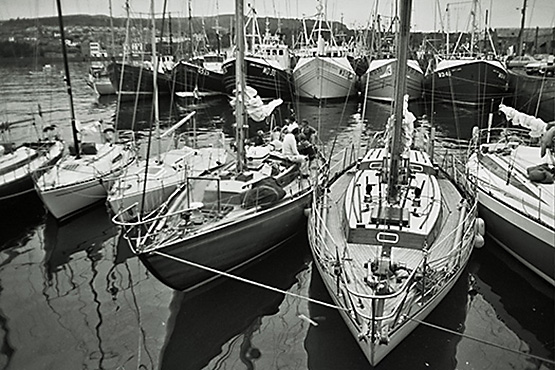
Sunstone (centre) with ISORA racers among the fishing boats in the pre-marina days in Howth during the 1970s. Photo: W M Nixon
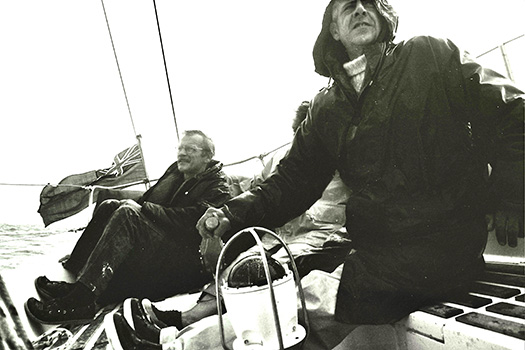
If ISORA could be said to have a single founder back in 1971, it was Dickie Richardson of Holyhead (left), seen here aboard his Ohlson 38 Matthew Walker which he completed with his sons from a bare hull. Photo: W M Nixon
At least that’s my recollection, but it’s vague in the extreme, for although like many the annual ISORA programme used to dominate my summers, those days were long gone, surrendered – sometimes rather unwillingly, it has to be admitted – to growing family demands.
Time was when the husband of the household was expected to be away at sporting things most weekends. But that attitude was changing very rapidly, and you only had to look at ISORA turnouts to see the change in domestic priorities taking place as a fact of life in its new form.
Of course there were some splendid family crews racing offshore involving two and sometimes three generations. But as other forms of sport and specialist interests developed, such crews became increasingly rare, and anyway offshore racing wasn’t everyone’s cup of tea. So you could argue that the thing that almost killed off ISORA was the most scary advertising slogan of our times, five seemingly innocuous little words which promote any event or activity which reflects the new domestic priorities.
“FUN FOR ALL THE FAMILY!!!!!!” For dyed-in-the-wool offshore racers of the rather anti-social traditional type, hearing or seeing this chirpy message was like showing the sign of the cross to a vampire on the prowl. And for enthusiasts of the smelly crazy sport of taking a three day weekend to position and return an offshore racer for a distance race involving kindred spirits from God knows where, it meant death by a million painful pinpricks.
So much so, in fact, that we who were formerly addicted were brainwashed into totally abandoning our old ways. Thus when I heard that a dinner was maybe being planned to wind up dear old ISORA, excuses were readily forthcoming for being elsewhere.
Except that reports of the death of ISORA proved to be greatly exaggerated. Memories are vague in the extreme. And anyway I wasn’t there, even though I’d been in and around the birth of ISORA way back in the early 1970s. But in this instance I don’t want to spoil the myth by asking specific questions of those who were there a few years back about that supposed Laying To Rest That Never Happened. For my impression is that, owing to a November mega-gale, the ferry from Holyhead was unable to sail. The Welsh and English contingents didn’t get to the requiem dinner in the first (or last) place. And the Irish crowd enjoyed themselves so much they decided they were going to keep ISORA going after all.

The National Yacht Cub, where ISORA was re-born

Failure is an orphan, but success has parents everywhere. Nevertheless I think few will disagree with the assertion that it is former NYC Commodore Peter Ryan, with the help of Stephen Tudor from Pwllheli, who has done most to keep ISORA going on life support, and then start to revive it actively with sponsorship from Avery Crest when the time is right.
And that right time seems to be right now. ISORA is putting Lazarus in the ha’penny place with a very healthy turnout for today’s 54-mile Dun Laoghaire to Holyhead Race. With 28 boats coming to the line, and it still only mid-May, we’re looking at substantial growth which shows every sign of being sustainable, so maybe we should try to explain the odd appeal of short to middle distance offshore racing.
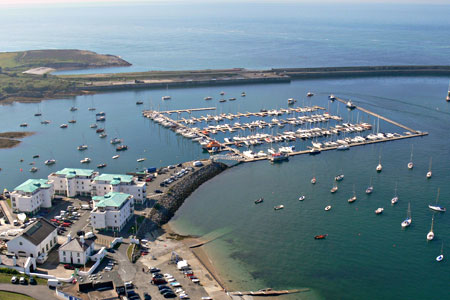
Holyhead is the destination for today’s ISORA cross-channel race. The marina in the corner of the harbour known as Porth y Fellyn is a world away from the popular perception of Holyhead as a raw ferry port.
Part of the answer has to be that once you’ve fulfilled all the complex tasks of bringing your boat up to the required standard in terms of equipment and crew qualifications, the actual event itself could not be simpler. The basic simplicity of an offshore race is its USP in today’s ludicrously complicated world. Unlike complex inshore multi-race regattas, there’s just one start, just one course, and just one finish line. Heaven knows but our everyday lives are weird enough and busy enough these days, thus it’s refreshing to find a sport whose basis is so utterly simple.
Of course there are all sorts of complexities of winds and tides and tactics and strategies underlying this basic simplicity. For instance, to an outsider, surey nothing could seem simpler than a race from Dun Laoghaire to Holyhead? Believe me folks, it may be a straight line across channel. But once you’re into it, you find the factors involved are infinite in their variety.
Yet underneath it all is this appealing simplicity of just the one start and just the one finish. And it goes on for long enough to build up a silent but strong relationship with the boats and crews you’re racing against. That old sailor’s opinion: “I don’t like the cut of his jib” can begin to have real meaning.
At ISORA’s height when the annual season-long points championship could involve more than a hundred boats when every event was included, the fleet was as diverse as it was long-lived. Today you see boats of the S & S 34 class, or a whole raft of Swans, or boats like Sarnia or Setanta, as being interesting yet still very much alive relics of a different age of sailing. And in this historic list, one boat in particular stands out. When we raced against her, she was called Dai Mouse III and she was owned by a Cheshire publican called David Hague. But nowadays - and for more than 25 years – she is known as Sunstone, the 40ft S&S sloop which Tomy and Vicky Jackson cruise the length and breadth of the globe with such competence that they recently became the latest awardees of the annual Blue Water Medal of the Cruising Club of America, which is tops of the tops.
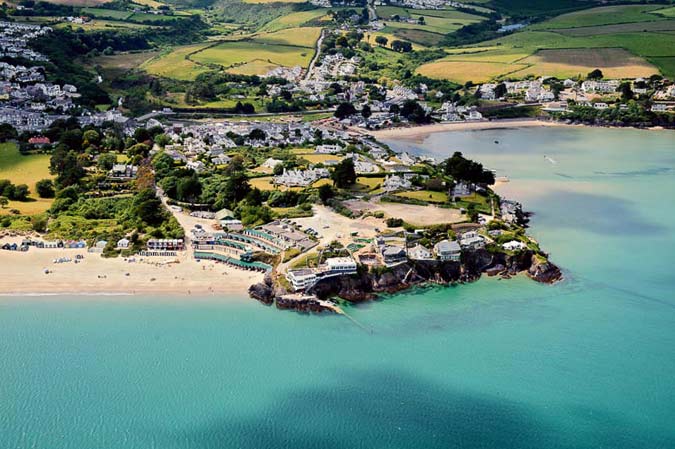
Abersoch on the Lleyn Peninsula in North Wales is another ISORA location. The clifftop clubhouse of South Carnarvon YC is reputedly suspended from its roof in a masterpiece of engineering.
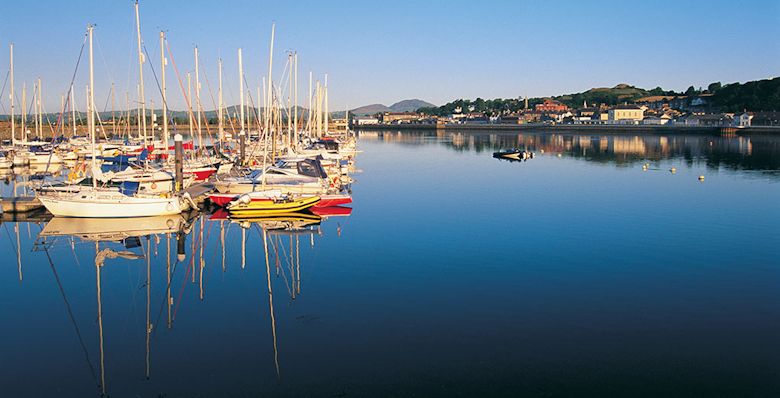
Pwllheli provides total shelter at the head of Tremadoc Bay when the ISORA fleet is in port
But for old ISORA hands, the attitude is that Dai Mouse III is doing well for herself, and it’s just right and proper. They could be an odd bunch, the ISORA people. The kind of people who take to offshore racing aren’t people who indulge in passing fads, and throwaway entertainments. They’re literally in it for the long haul. Yet they’re not the kind of people who’ll necessarily attach themselves to the high profile glitzy glamorous offshore events. Rather they go for the straightforward low-key distance races with a strong local tinge, races which provide them with private satisfaction, and an absorbing way of relaxing at weekends.
So obviously it’s not for everyone. In fact, it’s obviously not for the vast majority of the sailing population. Yet it’s not elitist. It’s a form of sailing which appeals to those who may not be the ultimate hotshots in club racing, but give them a moderate offshore challenge, and they come into their own. As for it being accessible, if you show genuine interest you’ll find you get involved, but it’s not for the casual thrill seeker who will be interested in something else entirely the following weekend. And exclusive? Of course it’s exclusive. If you can’t face with continued enthusiasm the thought of being cold and wet and in the dark and probably seasick now and again, then you’re automatically excluded.
The biggest ISORA fleet in many years gathers at 8am on Saturday morning for a 54–mile race from Dun Laoghaire Harbour to Holyhead.
The number of boats taking part in the race is a record for recent times in ISORA. Although the number of boats taking part in ISORA have been increasing from a low of 3-4 boats in 2007, such numbers have not have not been seen since the late ‘80s.
See the full entry list below.
Saturday morning is the start of first ISORA offshore race of the 2016 Avery Crest sponsored Offshore Series and follows a coastal race to Wicklow a fortnight ago.
The numbers have been boosted by boats obtaining the required offshore experience for the Round Ireland Race in Wicklow in June. The number of entries for the three qualifying races prior to the Round Ireland are similar to the first race. “Tanit”, winner of the Round Ireland Race and now owned by veteran ISORA sailor Robert Floate, will be making its ISORA debut on Saturday. The boat recently won the Round the Isle of Man Race. The race has also attracted some older boats – Darryl Hughes’s “Maybird”, a 1937 Gaffer is taking part in preparation for the Round Ireland.
ISORA bosses says they hope that the vision of such a large fleet of boats heading off across the Irish Sea will attract those other boats on both sides of the Irish Sea who are thinking about taking part. There is a big social après sail arranged for the finishers in Holyhead Sailing Club.
The course will be posted on the ISORA website, texted and emailed to all entries and shall be available in the NYC on Friday evening.
| Boat Name | Sail Number | Class | Latest IRC TCF | Full Name | Sailing Club |
|---|---|---|---|---|---|
| ADELIE | IRL 9631 | IRC | 0.987 | Peter Hall | National Yacht Club Dún Laoghaire |
| Albireo | 3435 | IRC | 0.939 | David A Simpson | Royal Irish Yacht Club |
| Another Adventure | IRL3511 (Note IRL 35 FOR RACE 1 | IRC | 1.029 | Daragh Cafferky | Other Club than listed below |
| Applegreen Sail For Kids | IRL7963 | IRC | 0.947 | Stephen Mullaney | Howth Yacht Club |
| Aquaplane | GBR7878L | IRC | 1.001 | Mark Thompson | Pwllheli Sailing Club - Clwb Hwylio Pwllheli Sailing Club |
| Aurelia | IRL35950 | IRC | 1.077 | Chris Power Smith | Royal St George Yacht Club |
| Axiom | IRL3709 | IRC | 1.035 | Michael O'Neill | Royal Irish Yacht Club |
| Bam | IRL1471 | IRC 2-handed | 1.047 | Conor Fogerty | Howth Yacht Club |
| Flashback | IRL 3470 | IRC | 0.987 | Paddy/Don Breen | Howth Yacht Club |
| Harriet Marwood | GBR3556L | IRC | 1.005 | Bryan Mullarkey | Holyhead Sailing Club |
| Jackknife | GBR8859R | IRC | 1.152 | Mr Hall | Pwllheli Sailing Club - Clwb Hwylio Pwllheli Sailing Club |
| Justjay | GBR7709R | IRC | 1.015 | Nigel Ingram | Holyhead Sailing Club |
| Lively Lady | IRL 1644 | IRC | 1.106 | Derek Martin | Royal Irish Yacht Club |
| Lula Belle | IRL3607 | IRC | 0.992 | Liam Coyne | Wicklow Sailing Club |
| LYNX | IRL 7386 | IRC | 1.044 | Kenneth Rumball | Other Club than listed below |
| Maybird | GBR 644R | IRC | 9.999 | Darryl Hughes | Other Club than listed below |
| Mojito | GBR0947R | IRC | 1.010 | Peter Dunlop | Pwllheli Sailing Club - Clwb Hwylio Pwllheli Sailing Club |
| MoJo | GBR8134T | IRC | 1.007 | PAUL HAMPSON | Liverpool Yacht Club |
| Obsession | IRL 4513 | IRC | 0.931 | Bryan Dobson | Sailing in Dublin (SID) Club |
| Pink Panther | IRL2504 | IRC 2-handed | 0.94_ | Carol Bellamy | National Yacht Club Dún Laoghaire |
| Pipedreamer VI | GBR2271L | IRC | 1.016 | Paul Sutton | Holyhead Sailing Club |
| Polished Manx2 | GBR 7003T | IRC 2-handed | 1.029 | Kuba Szymanski | Douglas Bay Yacht Club |
| REBELLION | IRL 6001 | IRC | 1.056 | John Hughes | National Yacht Club Dún Laoghaire |
| Ruth | IRL 1383 | IRC | 1.016 | Shanahan Family | National Yacht Club Dún Laoghaire |
| Sgrech | GBR9319R | IRC | 1.015 | Stephen Tudor | Pwllheli Sailing Club - Clwb Hwylio Pwllheli Sailing Club |
| Tan It | GBR 731T | IRC | 1.051 | ROBERT FLOATE | Isle of Man Yacht Club |
| Thalia | IRL733 | IRC | 1.028 | Leggett Kinsman | National Yacht Club Dún Laoghaire |
| Windshift | irl37737 | IRC | 0.98_ | Brian Gillen | Royal St Georges Yacht Club |
| WOW | IRL4208 | IRC | 1.123 | George Sisk | Royal Irish Yacht Club |

